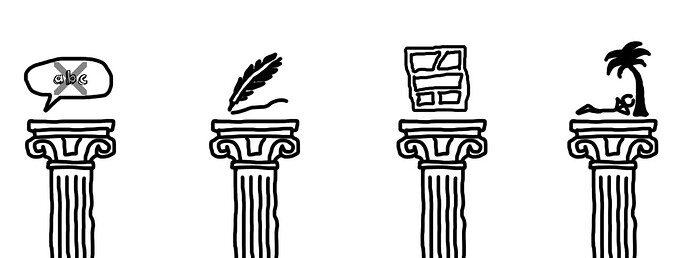2.- THE DESIGN PILLARS
So, there I was, with a game to do and only ten days to go.
I had already read about using self-imposed constraints as a prolific game design criterion, and restrictions were what I had, being the biggest one the lack of time for beta testers, especially if they needed to spellcheck the texts of the game, as I am not an English native speaker.
So, the main concept of the game was born out of necessity: Not having output text.
Well, no text means use something instead, and graphics come to the rescue. Users would see a graphical world, and they would type the actions in the usual way, with the responses as a graphics output.
This decision showed me two new problems to solve related to the lack of time:
-
Graphics are more time consuming to create than text.
-
Animated sprites moving through the screen as the usual video games require not only time but also a classical video game “sprite engine” to set up.
The first problem was quickly solved by thinking: make a game with cartoon line drawings, so graphics would be a bit slow to create but not so much, and the time to spend was fully on my side not depending on others to check texts. So the results and the fact of having a game on time would depend only on my effort. Related to this I also decided to use a minimalistic visual approach for the game, that I feel included this pillar.
The second problem was also quick to solve and fully related with the graphical style to be adopted: Not to make a “sprite” video game with animations like “cinema”, but change the communication mode to another medium, the comic.
At that moment I thought the idea was becoming perhaps too “innovative”, as I don’t know about other games that were made that way (this does not mean they do not exist), so I didn’t know how that would work, especially the communication with the player through comic vignettes without using text. I will talk more about this later.
But here I set another pillar for the design of this game: It should just be a funny light thing to do to send something to the comp, without stress or high expectations for the result. I can get a bit obsessive and perfectionist sometimes, and this is an enemy of fun and tends to cause “analysis paralysis” situations. So this pillar, which seems a silly one, was in fact the most important for me, turning to read it again from time to time to stay in the line.
